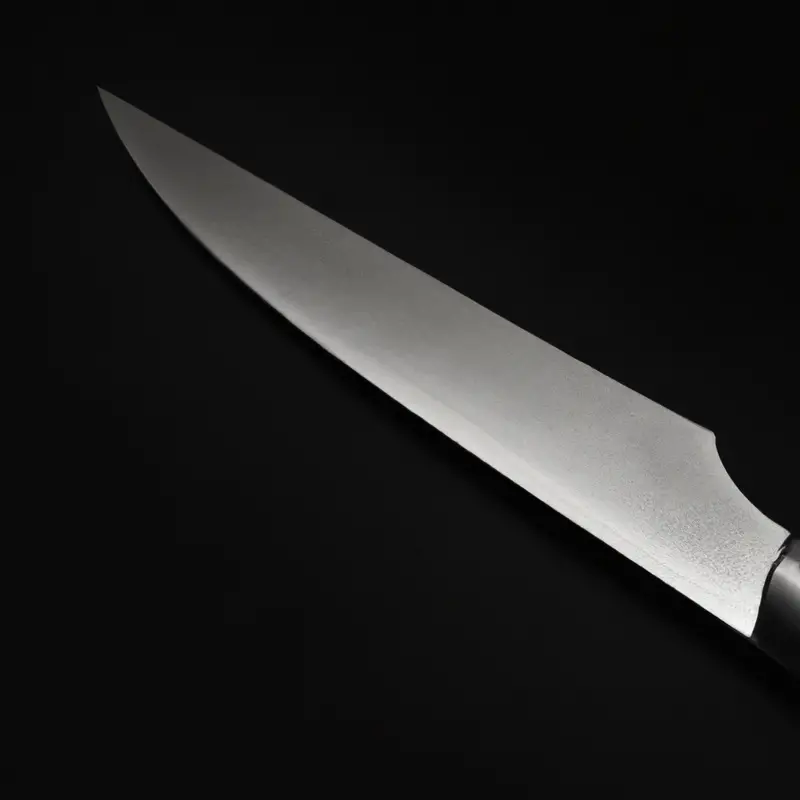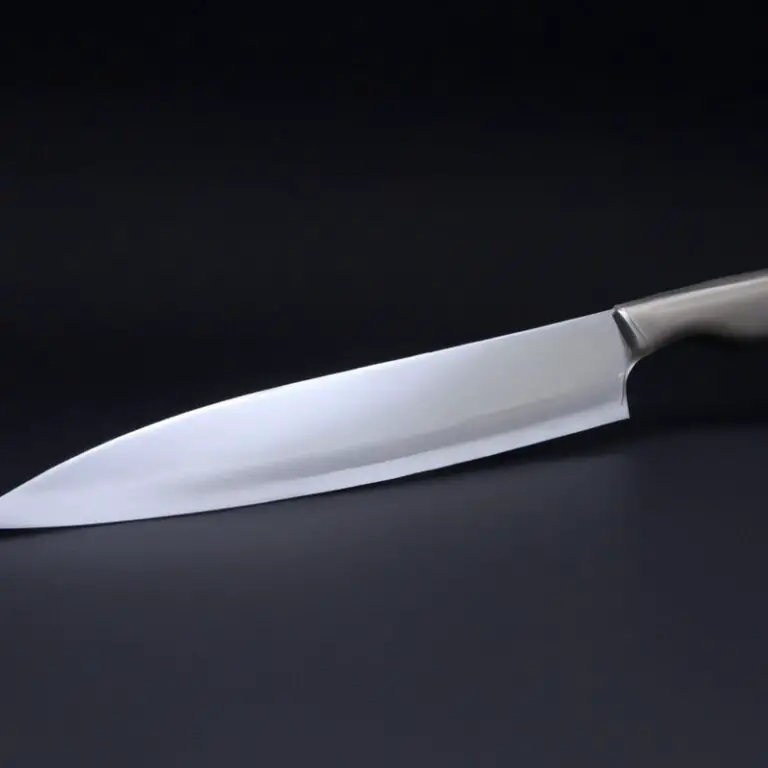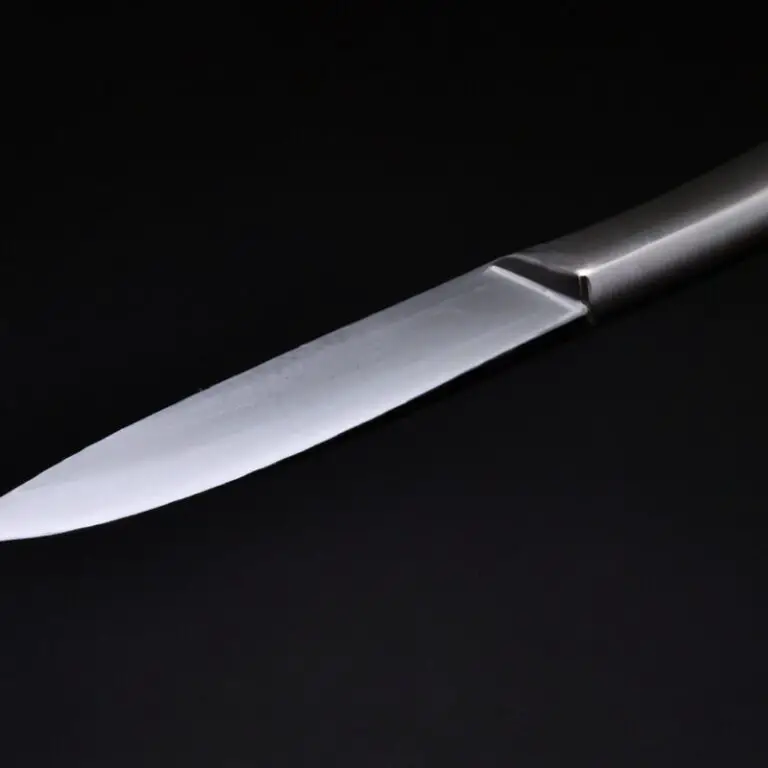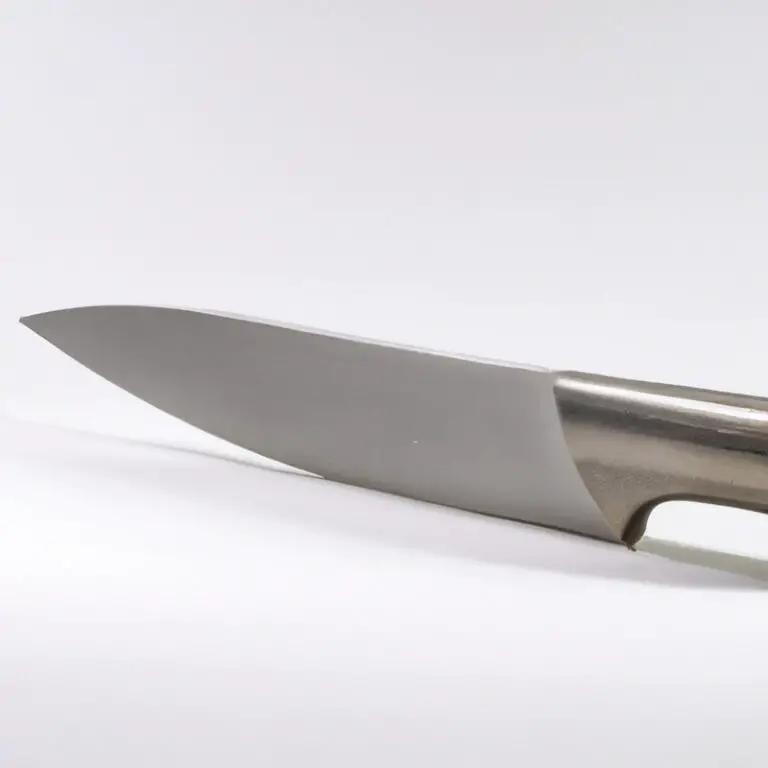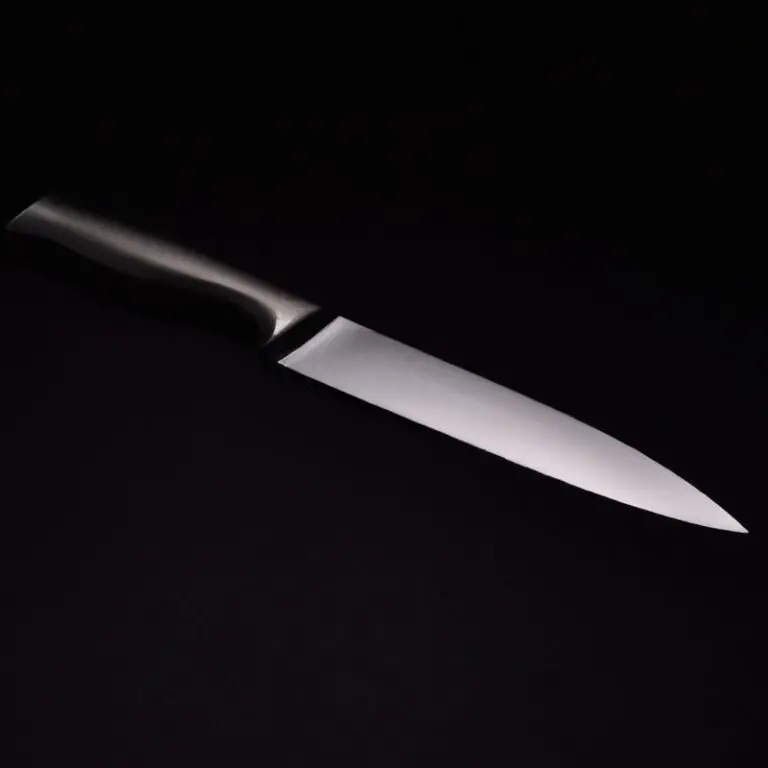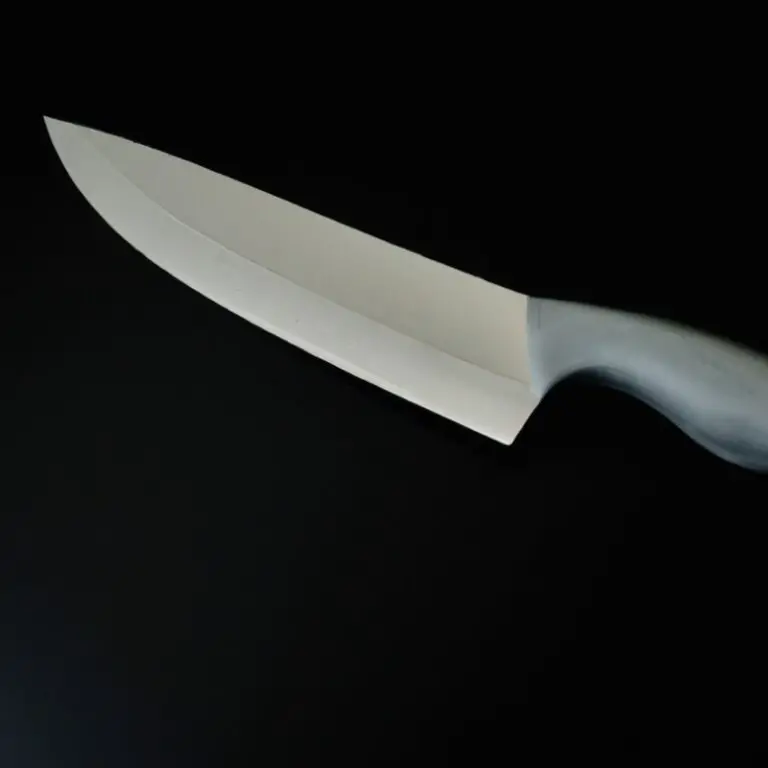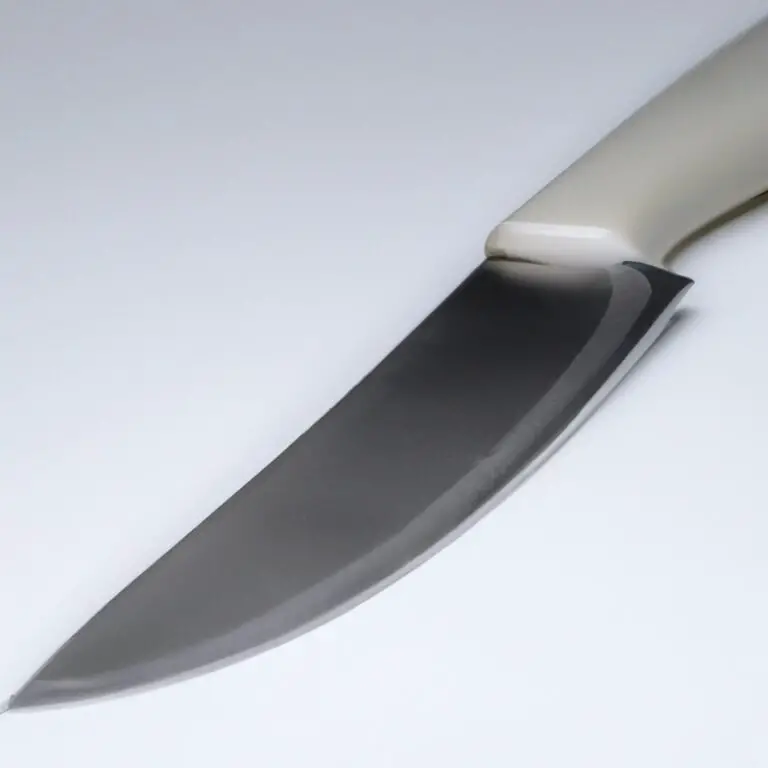Are Santoku Knives Suitable For Outdoor Barbecues? Explained
Key Takeaways:
- Santoku knives are versatile enough for outdoor barbecuing and can handle a variety of tasks, including slicing meats and vegetables.
- The compact size and sharpness of Santoku knives make them convenient for outdoor use, making them a popular choice among barbecue enthusiasts.
- When choosing a Santoku knife for barbecuing, look for durable materials, a comfortable grip, and a sharp blade that can withstand the rigors of outdoor cooking.
- While Santoku knives aren’t specifically designed for outdoor barbecuing, they are a valuable tool for any grill master looking for a versatile and reliable cutting utensil.
When it comes to outdoor barbecues, having the right cooking tools is essential for a successful grilling experience. One knife that has gained popularity in recent years is the Santoku knife.
But is this Japanese knife really suitable for outdoor cooking?
As an experienced chef and outdoor enthusiast, I’ve put Santoku knives to the test. In this article, I’ll share my insights on how Santoku knives can enhance your outdoor cooking experience, the advantages of using them, and how to choose the right one for your needs.
So, let’s explore whether Santoku knives are truly suited for outdoor barbecues.
| Santoku Knife | Chef’s Knife | |
|---|---|---|
| Blade Length | 5 – 7 inches | 8 – 10 inches |
| Blade Shape | Flatter and shorter | Longer and curved |
| Usage | Ideal for slicing, dicing, and chopping vegetables and fruits | Ideal for heavy-duty tasks such as cutting through meat and fish |
| Blade Material | High carbon stainless steel | Stainless steel |
| Handle Material | Wood or resin | Plastic, wood, or stainless steel |
| Portability | Lighter and easier to carry | Heavier and bulkier to carry |
| Suitability for Outdoor Barbecues | May not be the best choice for cutting through meat and other heavy-duty tasks, but great for slicing vegetables and fruits | Ideal for heavy-duty tasks such as cutting meat and fish during outdoor barbecues |
What is a Santoku Knife and How Can It Enhance Your Outdoor Cooking Experience?
A Santoku knife is a Japanese chef’s knife that has become popular in Western kitchens. These knives typically have a shorter, wider blade than a traditional chef’s knife and are designed for precision slicing, dicing, and mincing.
Santoku knives are made from high-quality materials and are built to last, making them the perfect tool for outdoor cooking.
Using a Santoku knife in your outdoor cooking can enhance your experience in many ways. The precision of a Santoku blade allows you to easily make thinner, uniform cuts of meat and vegetables, which can help with more even cooking.
The wide blade of a Santoku knife also makes it easier to scoop up chopped ingredients and transfer them to a pan or grill.
In addition, Santoku knives often have comfortable handles that provide a secure grip, which is especially important when working with slippery or greasy food items. The combination of a sharp blade and a comfortable handle makes chopping and slicing with a Santoku knife a breeze.
Overall, incorporating a Santoku knife into your outdoor cooking tools can help streamline your prep work and make your cooking experience more enjoyable.
So, if you’re looking to up your outdoor cooking game, consider adding a Santoku knife to your kit.
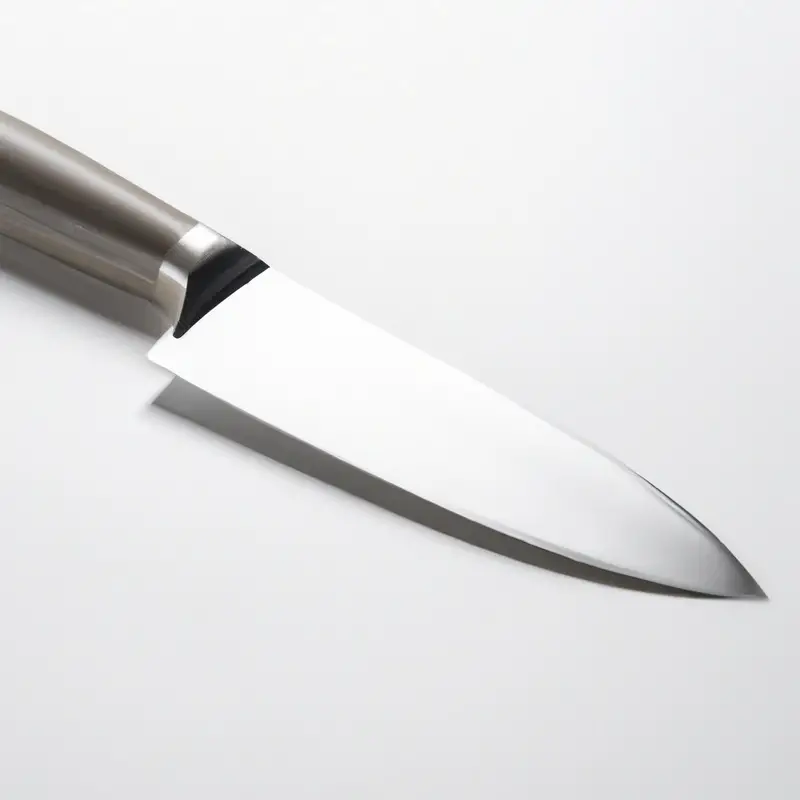
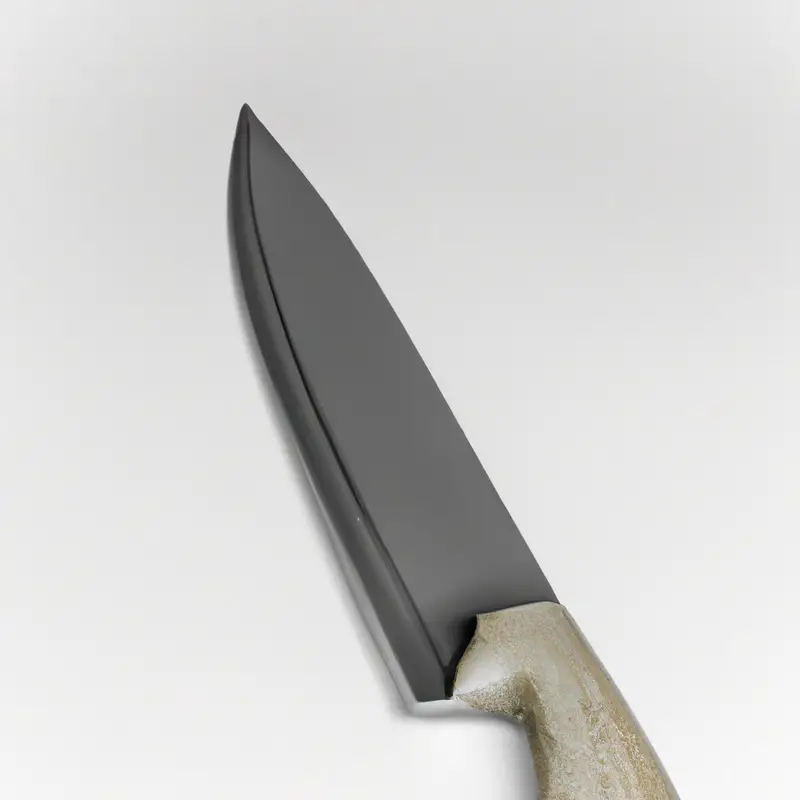
The Advantages of Using Santoku Knives for Outdoor Barbecues
Santoku knives have unique advantages that make them the perfect choice for outdoor barbecues. First, Santoku knives have a shorter blade length which means they are maneuverable and can easily make precision cuts.
Second, they have a thin and sharp blade that can easily slice through meat without tearing or damaging it.
Third, they have a Granton edge, which creates pockets of air between the food and blade, reducing friction and preventing food from sticking. Fourth, the blade’s wide shape makes it easy to transfer chopped ingredients from the cutting board to the grill.
Lastly, with their ergonomic design, Santoku knives are comfortable to grip even for extended periods, providing a safe and enjoyable outdoor cooking experience.
How to Choose the Right Santoku Knife for Your Outdoor Cooking Needs
When it comes to choosing the right Santoku knife for your outdoor cooking needs, there are a few things to consider. Firstly, decide what size blade you prefer.
Santoku knives typically range from 5 to 7 inches in blade length, with some larger options available.
Choose the blade length that feels comfortable in your hand and suits your cutting needs. Secondly, consider the blade material.
The most popular materials are high-carbon stainless steel, Damascus steel, and ceramic.
High-carbon stainless steel provides a sharp and durable blade, while Damascus steel offers a unique, layered appearance and sharpness. Ceramic blades are incredibly sharp and lightweight but may be more brittle and require more care.
Thirdly, examine the handle, which should feel comfortable in your hand and secure during use.
Handles can be made from various materials, including wood, plastic, and metal. Choose a handle material and shape that provides a comfortable grip and is resistant to slipping, even when handling wet or greasy foods.
By considering these factors, you can choose the right Santoku knife for your outdoor cooking needs.
Anatomy of a Santoku Knife: Understanding the Parts of the Blade and Handle
A Santoku knife generally has a blade length of around 5-7 inches. Its blade has a flat edge, which curves up to meet the tip, and a distinctive Granton edge with small oval-shaped dimples to reduce food from sticking to the knife.
The spine of the blade has a gentle rake, and the blade is angled with a thin taper on one side and a hollow grind on the other side.
All these features make it versatile for performing various chopping and slicing tasks. The handle of a Santoku knife typically has a comfortable grip, made either of wooden or synthetic materials.
It often has an ergonomic design with a bolster to provide an ideal balance for the knife.
It’s essential to choose a Santoku knife with a full-tang design where the blade’s metal extends into the handle for better durability and control. Understanding the anatomy of a Santoku knife can help you find the right knife for your outdoor cooking needs.
It’s essential to choose a Santoku knife that is compatible with your style of cooking and the ingredients you use.
Getting Started with a Santoku Knife: Tips for Proper Grip and Technique
To properly use a Santoku knife for outdoor barbecues, it’s important to have the correct grip and technique. Here are some tips to get started:
- Hold the knife with a firm grip and your fingers tucked under the handle for stability.
- Use a rocking motion when chopping vegetables or slicing meat.
- Keep the blade perpendicular to the cutting surface and use a slicing motion for precise cuts.
- Use a honing rod or sharpening stone to keep the blade sharp and safe to use.
- Always cut away from yourself and keep your fingers clear of the blade.
By following these tips, you can enhance your outdoor cooking experience and make the most of your Santoku knife. Remember to practice and be patient as mastering the proper grip and technique takes time.
Maintenance and Care of Your Santoku Knife: Keeping it Sharp and Safe
Maintaining and caring for your Santoku knife is crucial to ensure it stays sharp and safe for use during outdoor barbecues. Here are some tips to help you:
- Clean your knife immediately after use with warm, soapy water, dry it with a soft towel and store it in a knife block or protective sleeve to prevent damage.
- Sharpen your Santoku knife regularly with a honing steel or whetstone. For best results, angle the blade at 15-20 degrees and use a consistent stroke from base to tip.
- Avoid using abrasive surfaces or cutting hard materials such as bones, frozen foods, or glass with your Santoku knife as it can damage the blade. Use a separate knife for such tasks.
- Always use a cutting board to prevent dulling your knife’s blade, and refrain from cutting on metal or ceramic plates as they may cause irreparable damage.
By following these simple steps, your Santoku knife will remain sharp, durable and safe to use for years to come, giving you great performance for all your outdoor culinary adventures.
Integrating Santoku Knives into Your Barbecue Accessories for Ultimate Cooking Convenience
Santoku knives are versatile and convenient for outdoor barbecues. Integrating Santoku knives into your barbecue accessories can elevate your cooking experience.
One way to integrate Santoku knives is to invest in a knife block or magnetic holder to store the knife safely within reach.
Additionally, purchasing a Santoku knife with a blade length around 7 inches can help with precise cutting of fruits, vegetables, meats, and seafood. Santoku knives can also be used to dice, chop, mince, and slice ingredients quickly and efficiently, and their flat blades provide stable surfaces for scooping and transferring food from cutting board to grill.
To ensure the Santoku knife stays sharp, it is essential to invest in honing tools or sharpeners.
Regular cleaning and drying of the knife can also help with its maintenance and long-lasting use. Integrating a Santoku knife into your barbecue accessories can not only enhance the convenience but also add precision and efficiency to your outdoor cooking experience.
Top 5 Santoku Knives for Outdoor Cooking: Comparing Features and Price Points
Here are the top 5 Santoku knives for outdoor cooking, along with their key features and price points:
- Shun Premier Santoku Knife: This high-end option features a 7-inch blade made of VG-MAX steel for precision cutting, a comfortable Pakkawood handle, and a tapered bolster for improved balance. It comes with a price tag around $200.
- Wüsthof Classic 7-inch Santoku Knife: With a price point around $100, this German-made option boasts a full tang construction, a triple-riveted handle for durability, and a hollow edge design for reduced friction and food sticking.
- Mercer Culinary Millennia Santoku Knife: This budget-friendly option comes in at around $25 and offers a comfortable ergonomic handle, a textured finger points for improved grip, and a Non-stick blade for easy food release.
- Global G-48 7-inch Santoku Knife: This Japanese knife adds style to your outdoor cooking, with a seamless stainless steel construction, a lightweight feel, a balanced handle, and a price point around $140.
- Dalstrong Shogun Series Santoku Knife: Made from high-carbon Japanese AUS-10V steel, this option features a nitrogen cooling technique, an ergonomic handle, and a price tag around $120.
Ultimately, the best Santoku knife for outdoor cooking will depend on your personal preferences, budget, and cooking needs. Consider the blade material, handle design, weight, and other features when making your choice.
Using Santoku Knives for Unique Cuts and Preparation Techniques in Outdoor Cooking
Using Santoku knives for outdoor cooking can enhance your grilling experience. The versatile design of a Santoku knife allows for unique cuts and preparation techniques, making it a valuable tool in your outdoor cooking arsenal.
Santoku knives are excellent for slicing vegetables, meats, poultry, and fish.
Their wide, flat blade makes it easy to slice through ingredients with minimal effort. The Granton edge, which is found on some Santoku knives, includes small scallops on the blade’s edge to help reduce friction and food sticking to the blade.
This feature makes slicing even smoother and more effortless.
Santoku knives are also well-suited for chopping herbs, nuts, and fruits, as the pointed tip makes precision cutting and mincing possible. In addition, the flat area near the tip of the blade is perfect for crushing garlic or ginger.
When using a Santoku knife for outdoor cooking, it’s essential to maintain a proper grip and technique.
Keep your fingers curled under the handle and use a rocking motion with a light pressure on the blade to prevent injury. Always use a cutting board to protect the blade’s sharp edge.
In summary, utilizing a Santoku knife for unique cuts and preparation techniques in outdoor cooking can enhance your grilling experience.
Exploring Other Types of Knives for Outdoor Barbecues and How They Compare to Santoku Knives
While Santoku knives are excellent for outdoor barbecues, it’s worth exploring other types of knives to determine which ones could be more suitable for your specific needs. Here are some popular alternatives:
- Chef’s Knife – This versatile knife is great for slicing and chopping meat, vegetables, and fruits. Its longer blade (around 8 inches compared to Santoku knives’ shorter blades makes it ideal for larger cuts of meat.
- Cleaver – A cleaver is thicker and heavier than a Santoku knife. It is perfect for chopping through bones and tough meat, making it a valuable addition to your outdoor cooking kit.
- Serrated Bread Knife – A serrated bread knife is designed to slice through soft bread without crushing it. However, it is also excellent for cutting tomatoes and other soft fruits and vegetables.
- Paring Knife – If you need precise cuts for small vegetables or fruits, a paring knife is a great tool to have. Its small blade is perfect for detail work and can make quick work of slicing garlic, peeling fruit, and trimming meat.
Ultimately, the choice of knife will depend on your specific cooking needs and the types of food you’re preparing. Consider the blade length, weight, handle grip, and price range when making your selection.
Final Verdict
Santoku knives can be an invaluable addition to your outdoor cooking equipment. Their versatile nature, precision cuts, and ergonomic design make them perfect for preparing a variety of foods while maximizing efficiency and safety.
When selecting a Santoku knife, consider the size, blade material, and handle construction to ensure a comfortable grip and optimal performance.
With proper care and maintenance, your Santoku knife will last a lifetime and continue to enhance your outdoor cooking experience. Don’t settle for inferior knives or outdated techniques.
Invest in a Santoku knife and take your outdoor barbecues to the next level.
Trust us, your taste buds will thank you.

